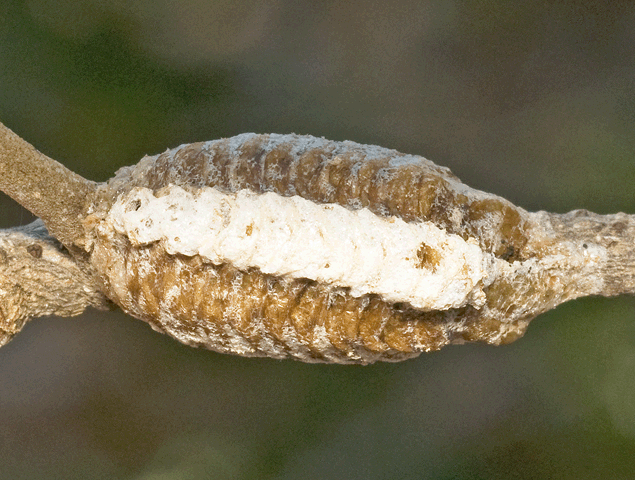Order Mantodea (Praying Mantids) in the Christopher B. Smith Preserve
Order Mantodea Characteristics: The ancestry of this order is linked with Order Blattodea (cockroaches and termites). Throughout the world, there are 15 families of mantids and about 2,400 described species. Most live in the tropics and subtropics. Most are classified as Family Mantidae. Of the 12 species found in Florida, all but one is in Family Mantidae. Although the common name, "praying mantis", is often used to describe all members of Order Mantodea, some people consider the name "mantid" to be more appropriate. They reserve "mantis" for species in the genus Mantis. "Mantis" is a Greek word which means "prophet and seer." A mantid's upraised front legs resemble hands of a prophet in prayer.
The front legs of all mantids are raptorial (grasping) and covered with large spines. Mantids often lie in wait or stalk their prey by slowly swaying forward to mimic vegetation blowing in a breeze. At the moment of attack, mantids seize the prey with their raptorial legs. A mantid can strike in 3/100 to 6/100 of a second with deadly accuracy. Mantids range in size from 20 to 200 mm, and have triangular heads that can turn 180˚, bulging eyes with great depth perception, and a very long pronotum (1st segment in the thorax).
After mating, a male is often eaten by the female. In this way, he provides nutrients for the eggs. Before she lays eggs, a female may digest her own vital organs and process them into a form that can be used by the eggs. If she has done this procedure, within a few hours or days of laying her eggs, she will die. All mantids have chewing mouthparts and gradual metamorphosis (egg, nymph, and adult stages).
Interactions in the Smith Preserve: Praying mantids are strictly carnivorous, keeping populations of some other organisms in check. Their diet consists of insects (including other mantids) and spiders. They are preyed upon by birds, lizards, insectivorous mammals, and other insects. Crickets prey on their eggs and young nymphs; parasitoid wasps lay eggs in their eggs.
Family |
Species Name |
Common Name |
Mantidae |
Stagmomantis carolina |
Carolina Mantid / Carolina Praying Mantis |
Stagmomantis carolina Carolina Mantid / Carolina Praying Mantid
|

